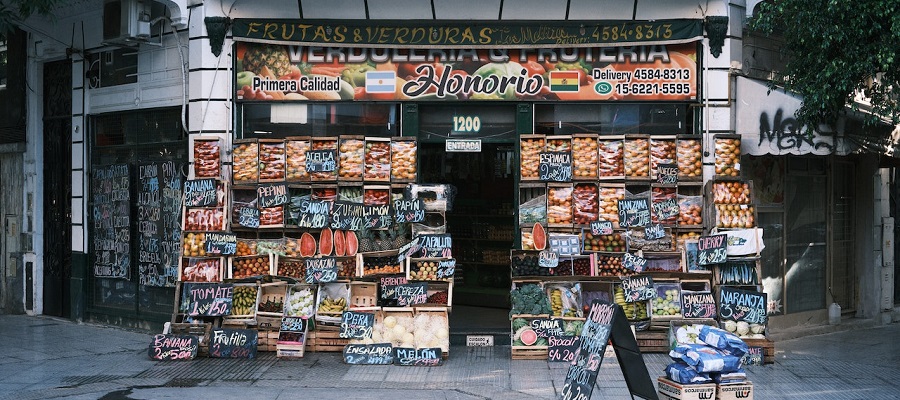India Grocery Store, what do you know about it? Grocery stores in India, also known as "kirana" stores, are small, independently owned stores that sell a wide range of household items, including groceries, toiletries, and household goods. Many of these stores are located in neighborhoods and serve as a primary shopping destination for residents.
Grocery stores in India often have a personal touch, with store owners often knowing their regular customers by name and providing personalized recommendations and services. They may offer home delivery, and may also provide credit to regular customers.
Grocery stores in India face competition from larger, organized retail chains and e-commerce platforms, but they continue to be a popular shopping destination due to their convenience and personal touch.
In addition to traditional, independently owned grocery stores, there are also larger grocery store chains operating in India, such as Big Basket and DMart. These stores offer a wider selection of products and may have a more modern retail environment, but they may not have the same level of personalization and customer service as smaller, independently owned stores.
India Grocery Store - The most important commodities in the grocery trade in India
The most important commodities in the grocery trade in India include a wide range of household items, including:
Rice: Rice is a staple food in India, and is an important commodity in the grocery trade.
Wheat: Wheat is also a staple food in India, and is used to make flour for bread, chapatis, and other baked goods.
Sugar: Sugar is a widely used commodity in the grocery trade, and is used in cooking and as a sweetener for beverages.
Edible oils: Edible oils, such as vegetable oil and ghee, are commonly used in Indian cooking and are important commodities in the grocery trade.
Spices: India is known for its wide variety of spices, which are an important part of Indian cuisine and are widely traded in the grocery market.
Tea: Tea is a popular beverage in India and is an important commodity in the grocery trade.
Milk and milk products: Milk and milk products, such as yogurt and paneer, are widely consumed in India and are important commodities in the grocery trade.
Fruits and vegetables: Fresh produce, such as fruits and vegetables, is an important part of the grocery trade in India.
Packaged and processed foods: Packaged and processed foods, such as snack foods, noodles, and instant mixes, are also important commodities in the grocery trade in India.
India Grocery Store - How grocery stores in India market for their goods
Grocery stores in India may use a variety of marketing strategies to promote their goods and attract customers. Some common marketing strategies used by grocery stores in India include:
Offering discounts and special deals: Grocery stores may offer discounts on certain products or bundles of products to encourage customers to make purchases.
Providing personalized recommendations and customer service: Many grocery stores in India have a personal touch, with store owners often knowing their regular customers by name and providing personalized recommendations. This personalization can be a strong marketing tool.
Using word-of-mouth marketing: Word-of-mouth marketing can be an effective strategy for grocery stores in India, as many customers rely on recommendations from friends and family when making purchasing decisions.
Advertising through local media: Grocery stores may advertise through local media, such as through local newspapers or on local radio stations, to reach a wider audience.
Using social media: Some grocery stores in India have a presence on social media platforms, such as Facebook and Instagram, to reach customers and promote their products.
Offering home delivery: Many grocery stores in India offer home delivery as a convenience for customers, and this can be a key marketing feature for the store.
Participating in community events: Grocery stores may participate in community events, such as local festivals or fairs, as a way to connect with customers and promote their products.
India Grocery Store - Can Indian stores open branches outside India to sell groceries?
It is possible for Indian stores that sell groceries to open branches outside of India. However, there may be several challenges and considerations to take into account when expanding a business into a new market, such as cultural differences, regulatory requirements, and competition from local businesses.
Before opening a branch outside of India, it is important for the store to thoroughly research the market and determine if there is a demand for its products and services. The store should also consider factors such as the cost of setting up a branch in the new location, the availability of suitable premises, and the potential for profitability.
It may also be helpful for the store to seek the advice of a business consultant or legal professional who has experience with international expansion to help navigate the process.
India Grocery Store - Financial volume of grocery business in Indian stores
The financial volume of the grocery business in Indian stores can vary widely, as it is a highly competitive and diverse market. According to a report by the Associated Chambers of Commerce and Industry of India (ASSOCHAM), the organized retail sector in India, which includes larger grocery store chains, is expected to reach INR 29.6 trillion (approximately USD 400 billion) by 2020. However, this figure includes all types of retail businesses, not just grocery stores.
The financial volume of individual grocery stores in India can also vary significantly depending on a number of factors, such as the location of the store, the size of the store, the type of products being sold, and the level of competition in the area. It is difficult to provide a general estimate of the financial volume of the grocery business in Indian stores without more specific information.
India Grocery Store - Conclusion
Grocery stores, also known as "kirana" stores, are a common sight in India and are an important part of the country's retail landscape. These stores are small, independently owned establishments that sell a wide range of household items, including groceries, toiletries, and household goods. Many of these stores are located in neighborhoods and serve as a primary shopping destination for residents. They often have a personal touch, with store owners often knowing their regular customers by name and providing personalized recommendations and services. Grocery stores in India face competition from larger, organized retail chains and e-commerce platforms, but they continue to be a popular shopping destination due to their convenience and personal touch. Indian grocery stores may use a variety of marketing strategies, such as offering discounts and special deals, providing personalized recommendations and customer service, advertising through local media, and participating in community events, to promote their products and attract customers. It is possible for Indian stores to open branches outside of India, but this process may involve a number of challenges and considerations.


